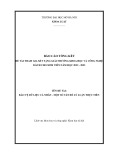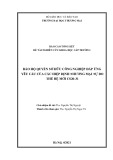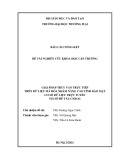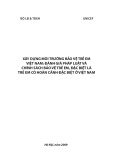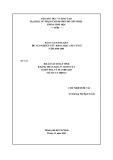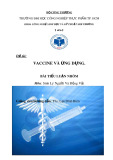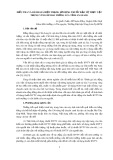
Disruption of the gene encoding 3b-hydroxysterol
D
14
-reductase (Tm7sf2) in mice does not impair
cholesterol biosynthesis
Anna M. Bennati
1
, Gianluca Schiavoni
1
, Sebastian Franken
2
, Danilo Piobbico
3
, Maria A. Della
Fazia
3
, Donatella Caruso
4
, Emma De Fabiani
4
, Laura Benedetti
5
, Maria G. Cusella De Angelis
5
,
Volkmar Gieselmann
2
, Giuseppe Servillo
3
, Tommaso Beccari
1
and Rita Roberti
1
1 Department of Internal Medicine, University of Perugia, Italy
2 Institut fu
¨r Physiologische Chemie, Rheinische Friedrich-Wilhelms-Universita
¨t, Bonn, Germany
3 Department of Clinical and Experimental Medicine, University of Perugia, Italy
4 Department of Pharmacological Sciences, University of Milan, Italy
5 Department of Experimental Medicine, University of Pavia, Italy
In cholesterol biosynthesis, lanosterol undergoes
removal of the methyl group at C14, leading to the
formation of C14–C15 unsaturated sterol intermedi-
ates. The enzymatic activity responsible for the reduc-
tion of the introduced double-bond, 3b-hydroxysterol
D
14
-reductase (EC 1.3.1.70), is carried out by the
endoplasmic reticulum (ER) protein delta14-sterol
reductase (C14SR) encoded by the TM7SF2 gene
Keywords
3beta-hydroxysterol delta14-reductase;
cholesterol biosynthesis; gene expression;
lamin B receptor; Tm7sf2
Correspondence
R. Roberti, Department of Internal Medicine,
Laboratory of Biochemistry, University of
Perugia, Via del Giochetto, 06122 Perugia,
Italy
Fax: +39 075 585 7428
Tel: +39 075 585 7426
E-mail: roberti@unipg.it
(Received 24 May 2008, accepted 11
August 2008)
doi:10.1111/j.1742-4658.2008.06637.x
Tm7sf2 gene encodes 3b-hydroxysterol D
14
-reductase (C14SR, DHCR14),
an endoplasmic reticulum enzyme acting on D
14
-unsaturated sterol interme-
diates during the conversion of lanosterol to cholesterol. The C-terminal
domain of lamin B receptor, a protein of the inner nuclear membrane
mainly involved in heterochromatin organization, also possesses sterol
D
14
-reductase activity. The subcellular localization suggests a primary role
of C14SR in cholesterol biosynthesis. To investigate the role of C14SR and
lamin B receptor as 3b-hydroxysterol D
14
-reductases, Tm7sf2 knockout
mice were generated and their biochemical characterization was performed.
No Tm7sf2 mRNA was detected in the liver of knockout mice. Neither
C14SR protein nor 3b-hydroxysterol D
14
-reductase activity were detectable
in liver microsomes of Tm7sf2
()⁄))
mice, confirming the effectiveness of
gene inactivation. C14SR protein and its enzymatic activity were about half
of control levels in the liver of heterozygous mice. Normal cholesterol
levels in liver membranes and in plasma indicated that, despite the lack of
C14SR, Tm7sf2
()⁄))
mice are able to perform cholesterol biosynthesis.
Lamin B receptor 3b-hydroxysterol D
14
-reductase activity determined in
liver nuclei showed comparable values in wild-type and knockout mice.
These results suggest that lamin B receptor, although residing in nuclear
membranes, may contribute to cholesterol biosynthesis in Tm7sf2
()⁄))
mice. Affymetrix microarray analysis of gene expression revealed that
several genes involved in cell-cycle progression are downregulated in the
liver of Tm7sf2
()⁄))
mice, whereas genes involved in xenobiotic metabolism
are upregulated.
Abbreviations
C14SR ⁄DHCR14, 3b-hydroxysterol D
14
-reductase; C27D
8
,5a-cholesta-8(9)-en-3b-ol; C27D
8,14
,5a-cholesta-8(9),14-dien-3b-ol; C29D
8
,
4,4-dimethyl-5a-cholesta-8(9)-en-3b-ol; C29D
8,14
, 4,4-dimethyl-5a-cholesta-8(9),14-dien-3b-ol; ER, endoplasmic reticulum; HEM, Hydrops-
Ectopic calcification-Moth-eaten skeletal dysplasia; LBR, lamin B receptor.
5034 FEBS Journal 275 (2008) 5034–5047 ª2008 The Authors Journal compilation ª2008 FEBS





